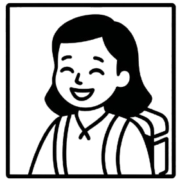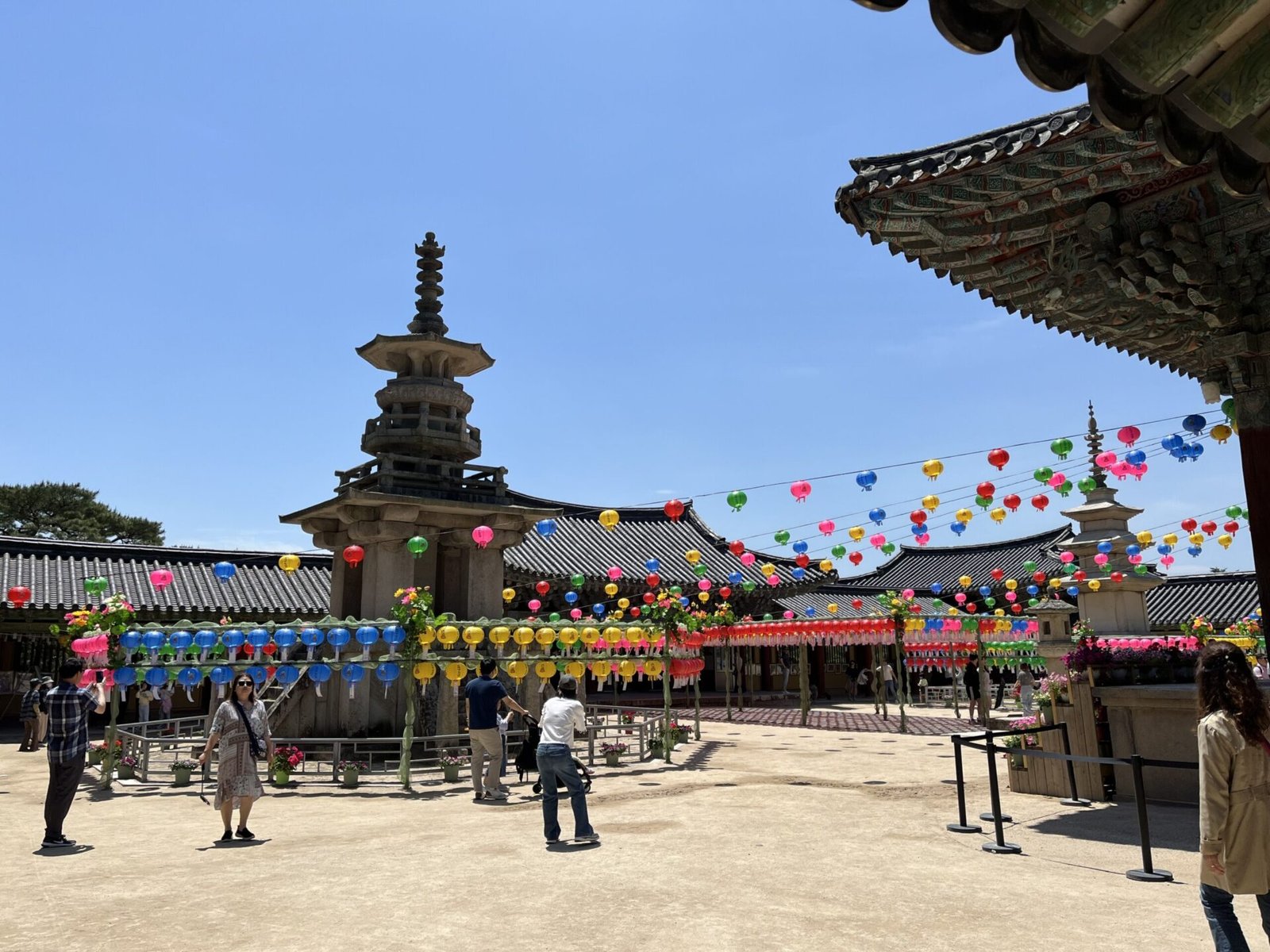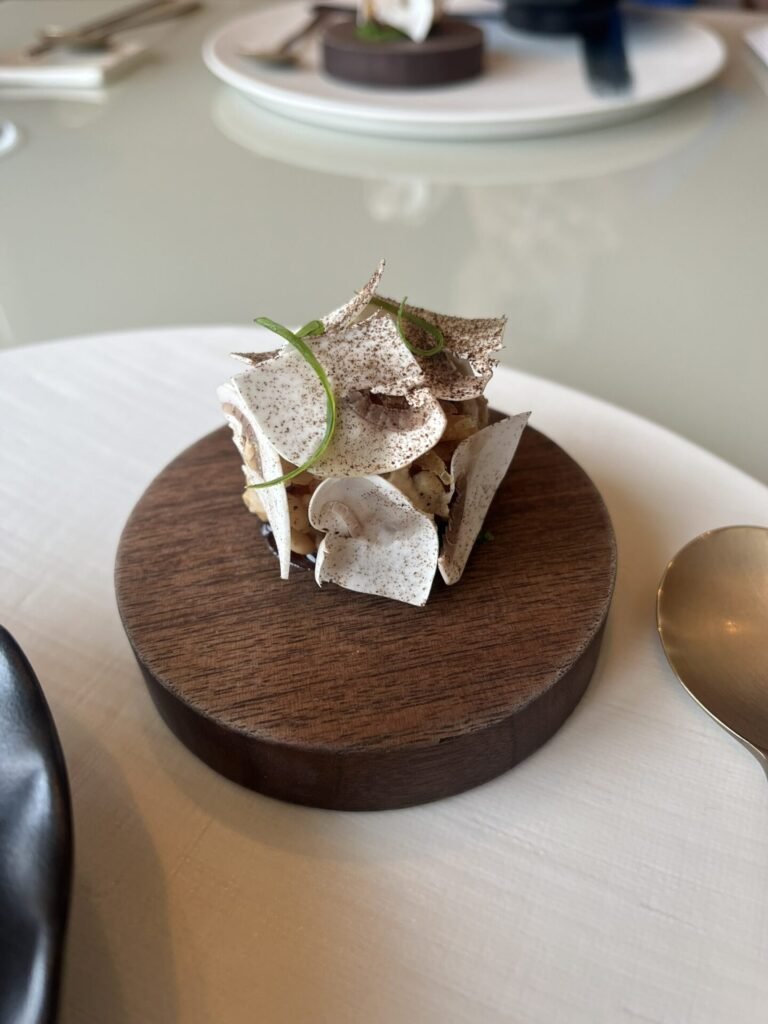Gyeongju Bulguksa Temple
If you’re planning to visit Gyeongju, you absolutely have to check out Bulguksa Temple. Growing up in Korea, Gyeongju and Bulguksa were our go-to field trip spots from elementary through middle school. While times might have changed, the historical significance of Gyeongju and Bulguksa is still a big deal for us Koreans.
Bulguksa Temple is massive and one of the most important temples in Korean history. It was first built in 528 during the Silla Dynasty and has been rebuilt multiple times. It was burned down by the Japanese, but then restored between 1963 and 1973. Bulguksa, along with Seokguram, became a UNESCO World Cultural Heritage site in 1995. You can find more details on the Bulguksa official website.
Bulguksa Temple Admission and Parking Fee
Good news: as of May 2023, admission to Bulguksa Temple is free! The parking fee is super cheap too, just 1,000 to 2,000 Korean Won (about $0.70 ~ $1.5 as of May 2024). There are several parking lots around the temple, and depending on where you park, it might take about 10 to 15 minutes to walk to the temple complex.
I went to Bulguksa Temple by car. So I parked on the west side (50-2, Jinhyeon-dong, Gyeongju-si, Gyeongsangbuk-do, Republic of Korea) and had a nice 10 to 15-minute walk to the entrance. Just a heads up, Google Maps might not show all the parking lots, but Naver Map or T Map (navigation app if you drive, available both in Google Play and App Store) does. For accurate directions, definitely use Naver Map or T Map when you’re traveling in Korea.
Getting to Bulguksa Temple
At the entrance, you’ll find a historical summary and a map. The temple is pretty big, so set aside at least 45 minutes for your visit.
The walk is easy and pleasant, with no steep hills, and you’ll see lots of stones piled up along the way, which is pretty cool.
Inside the Bulguksa Temple
As you keep walking, you’ll see the main gate called “Jahamun.” I was there right after Buddha’s Birthday in mid-May, so the temple was decorated with tons of lotus lanterns, making it look even more beautiful and colorful.
You can’t go upstairs via the main stairs, but if you go to the right of the gate, you can enter “Daeungjeon,” the Hall of Great Enlightenment, the temple’s main hall. Here, you’ll find Dabotap and Seokgatap, the two most famous pagodas in Korean history.
I remember learning how to tell them apart by their designs. “Dabotap” is more decorative and fancy, while “Seokgatap” is simple and restrained. Can you guess which is which?
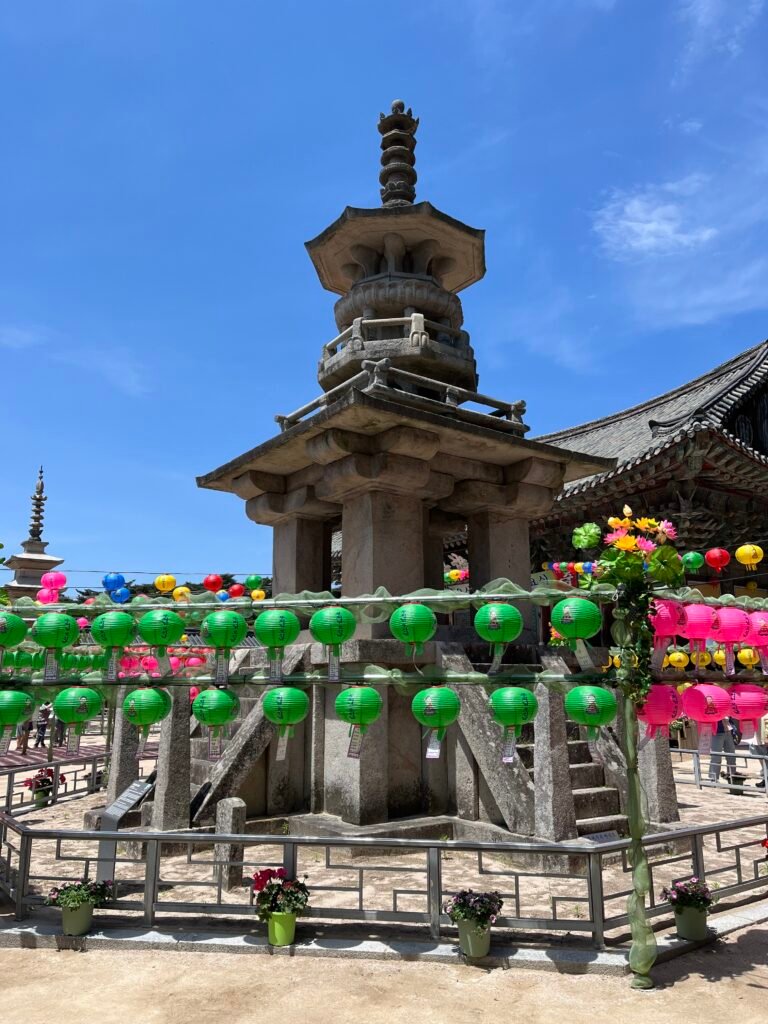
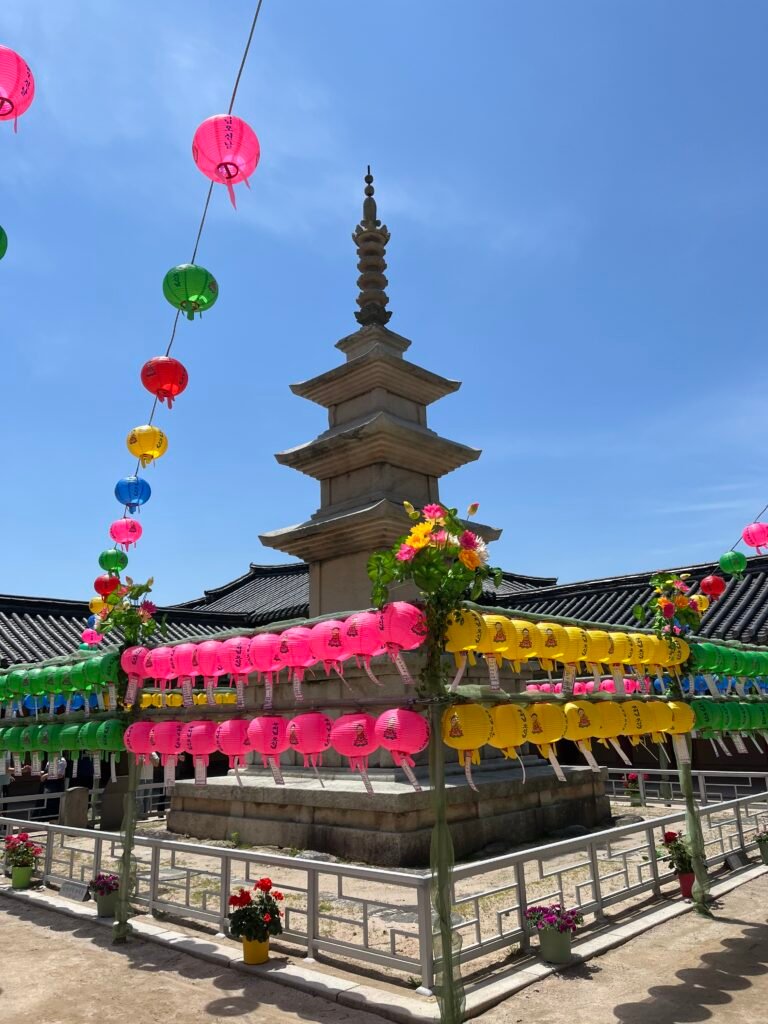
The first one is “Dabotap,” and the second one is “Seokgatap.” Even as someone living in the modern world, I’m always amazed by the technology and sophistication of these historic structures. I can’t even imagine how people back then must have felt about these amazing buildings.
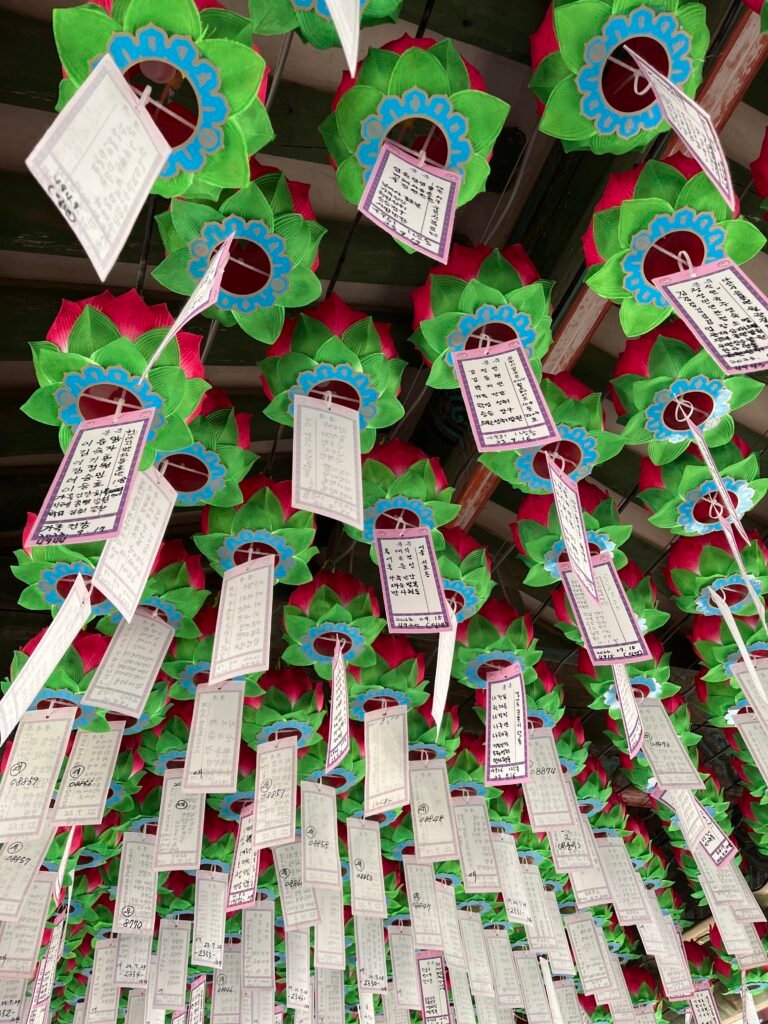
Since it was right after Buddha’s Birthday, there were many lotus lanterns all over the temple complex. Each lantern has a name and a wish for someone’s happiness, health, or well-being.
I didn’t have much time to visit each small temple within the complex, but each one has a different Buddha, like Vairocana Buddha in Birojeon and Avalokitesvara Buddha in Gwaneumjeon. On my last visit, I made sure to stop by each temple to bow to each Buddha. If you have the time and feel comfortable, it’s a meaningful experience. It’s not common for a single temple complex in Korea to have multiple Buddhas, making Bulguksa extra special.
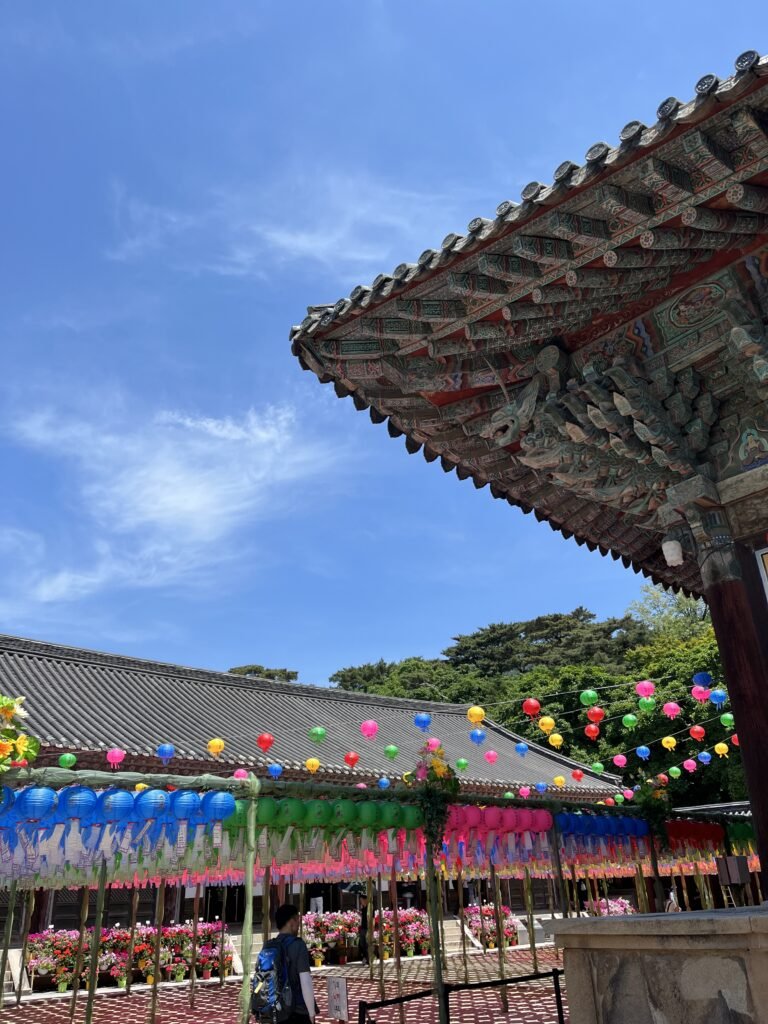
The day I visited, the sky was clear and blue.
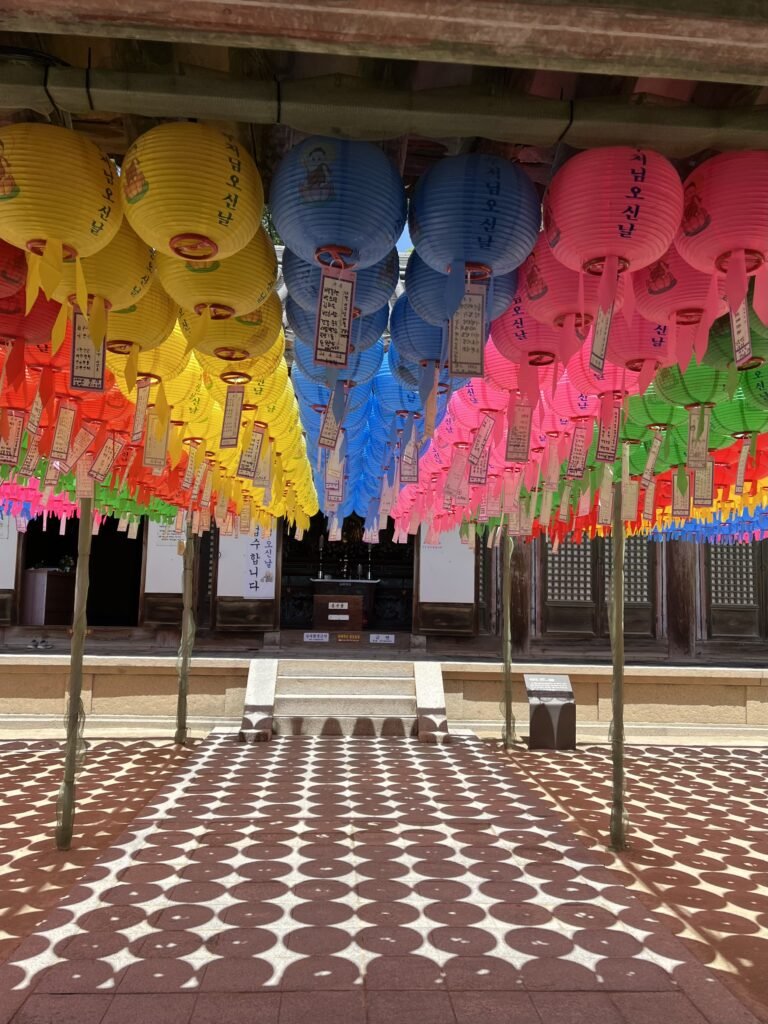
I hope all the wishes on the lanterns come true.
Here are some photos from my visit to Bulguksa Temple.
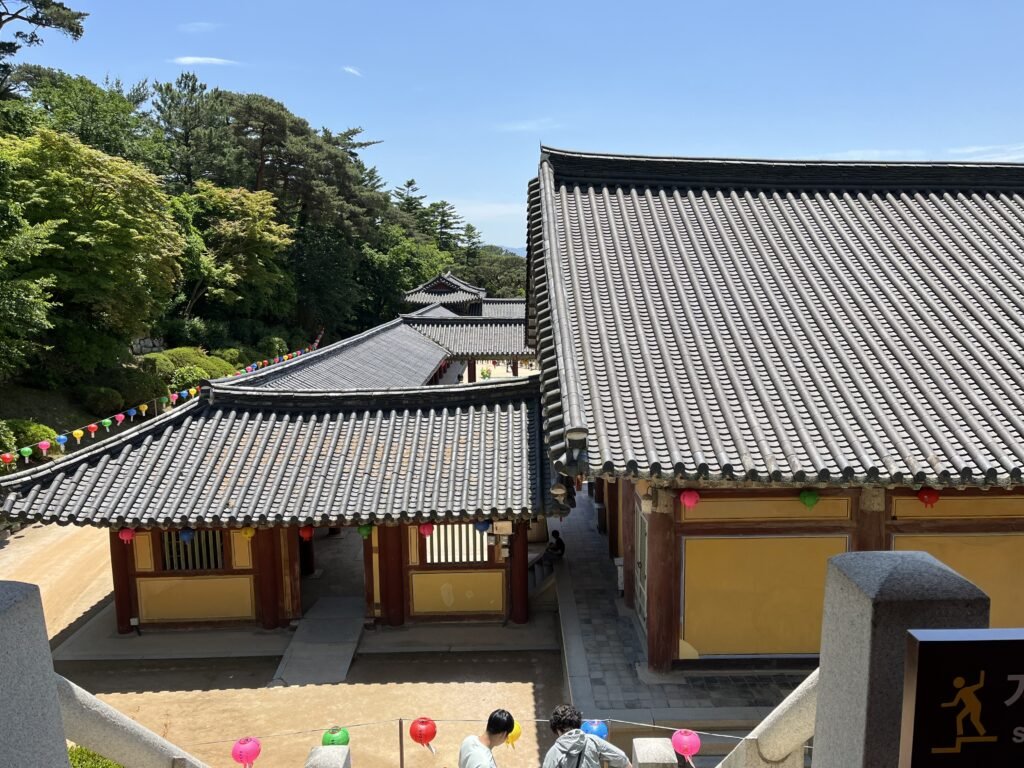
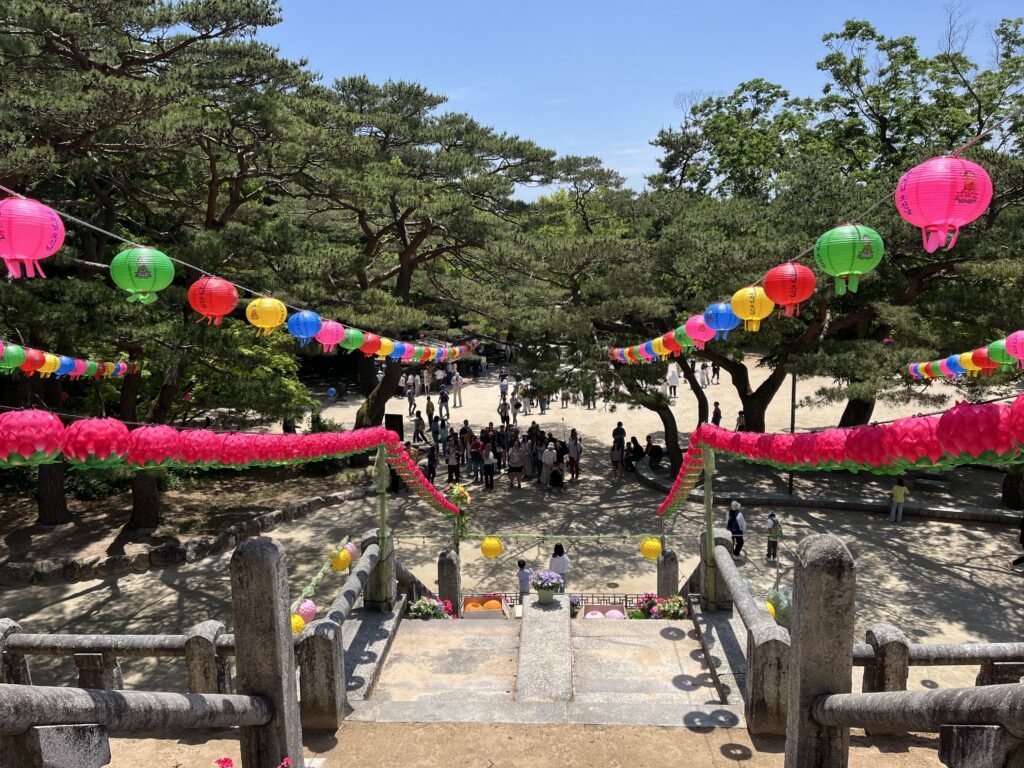
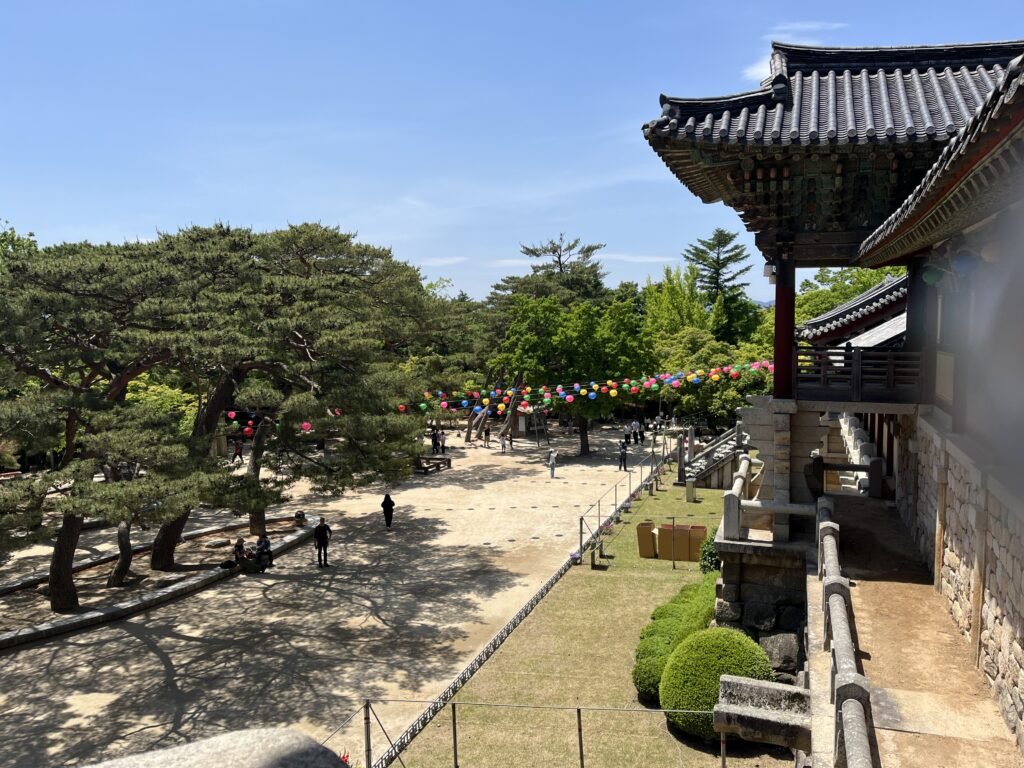
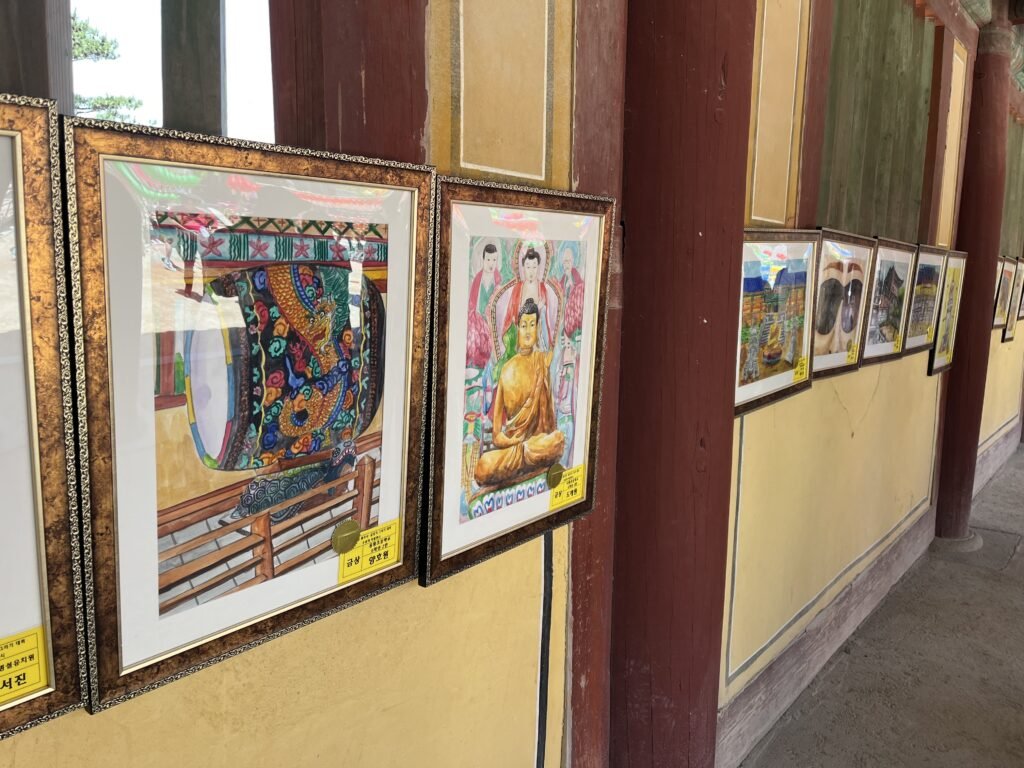
I highly recommend visiting Bulguksa Temple to get a real feel for the history and beauty of Korea. 😊
